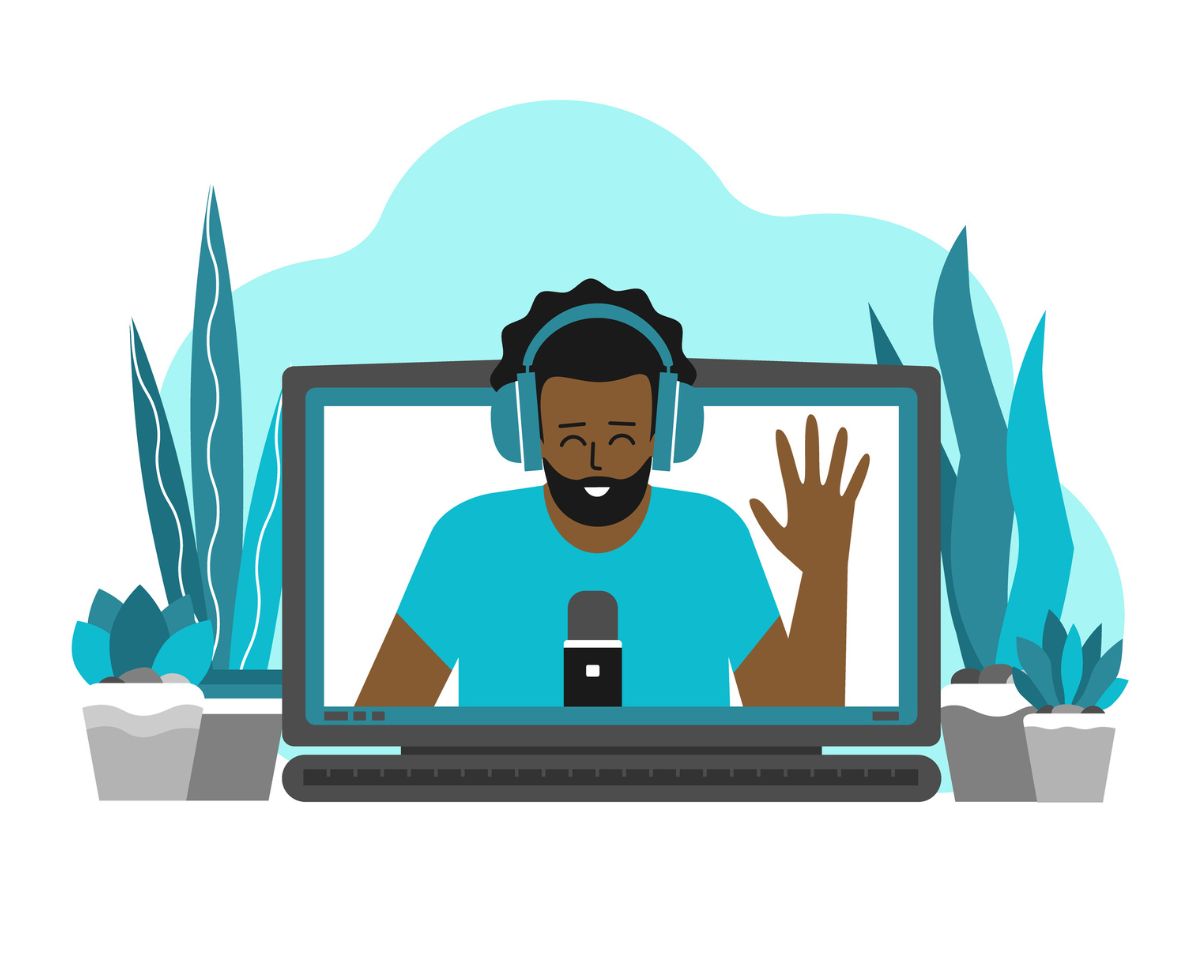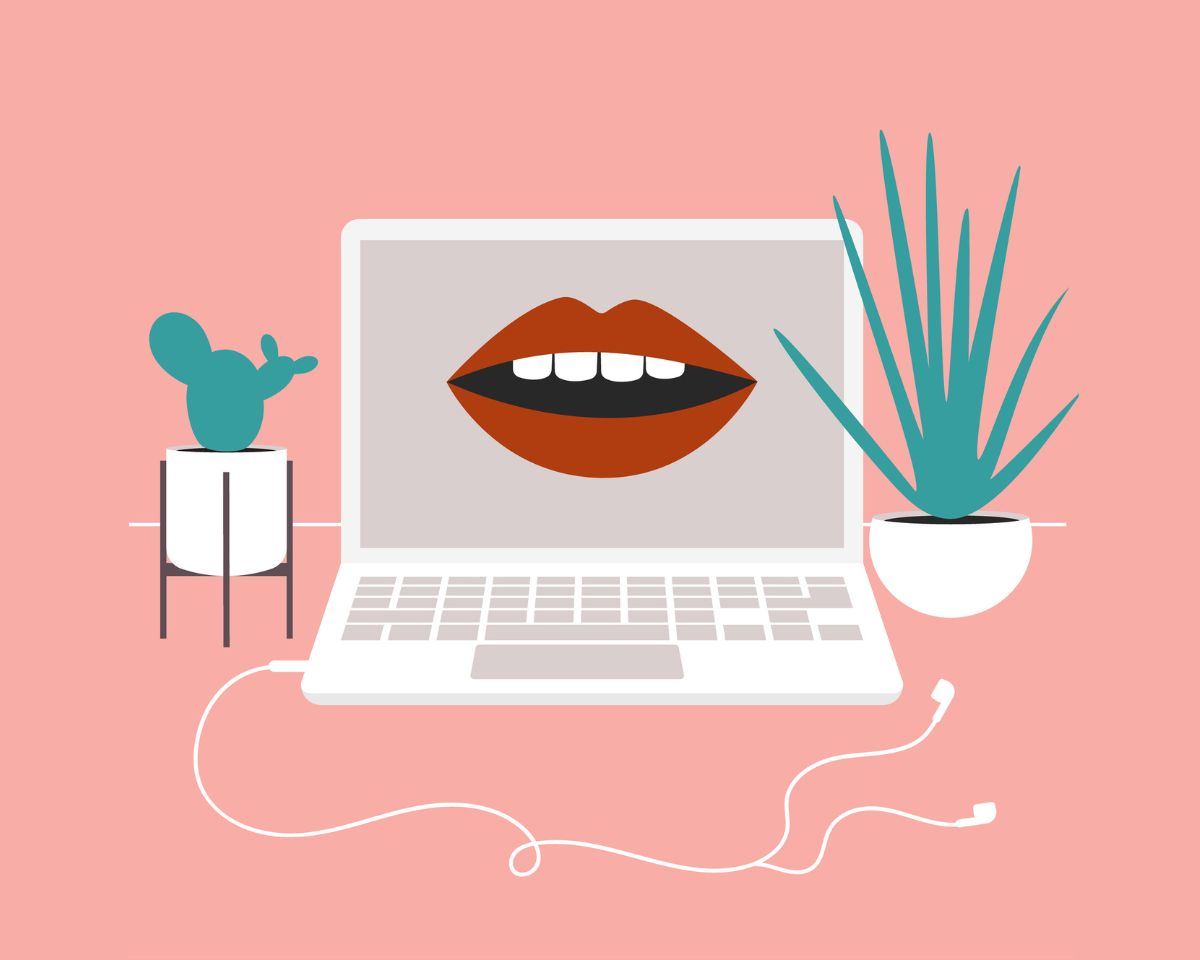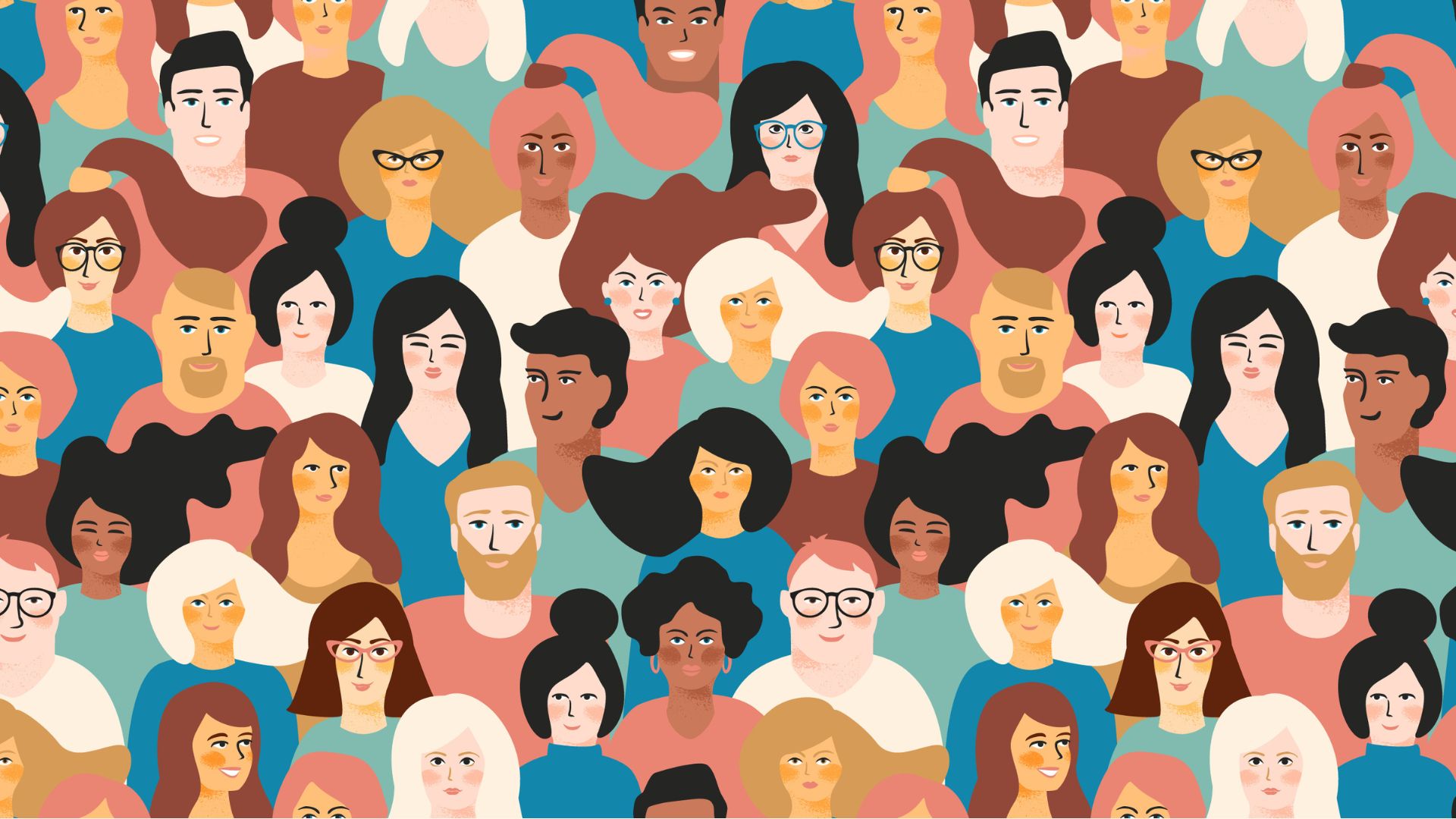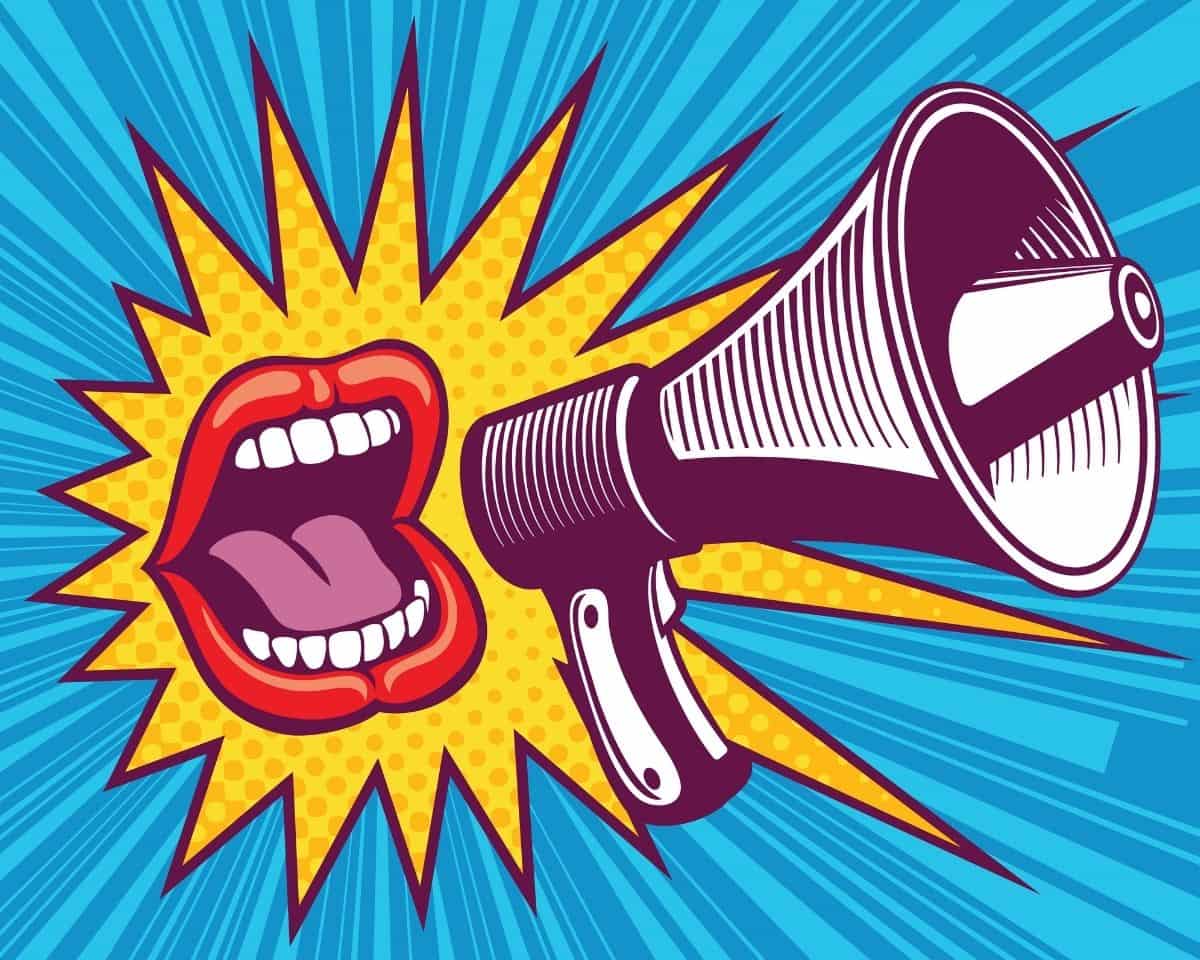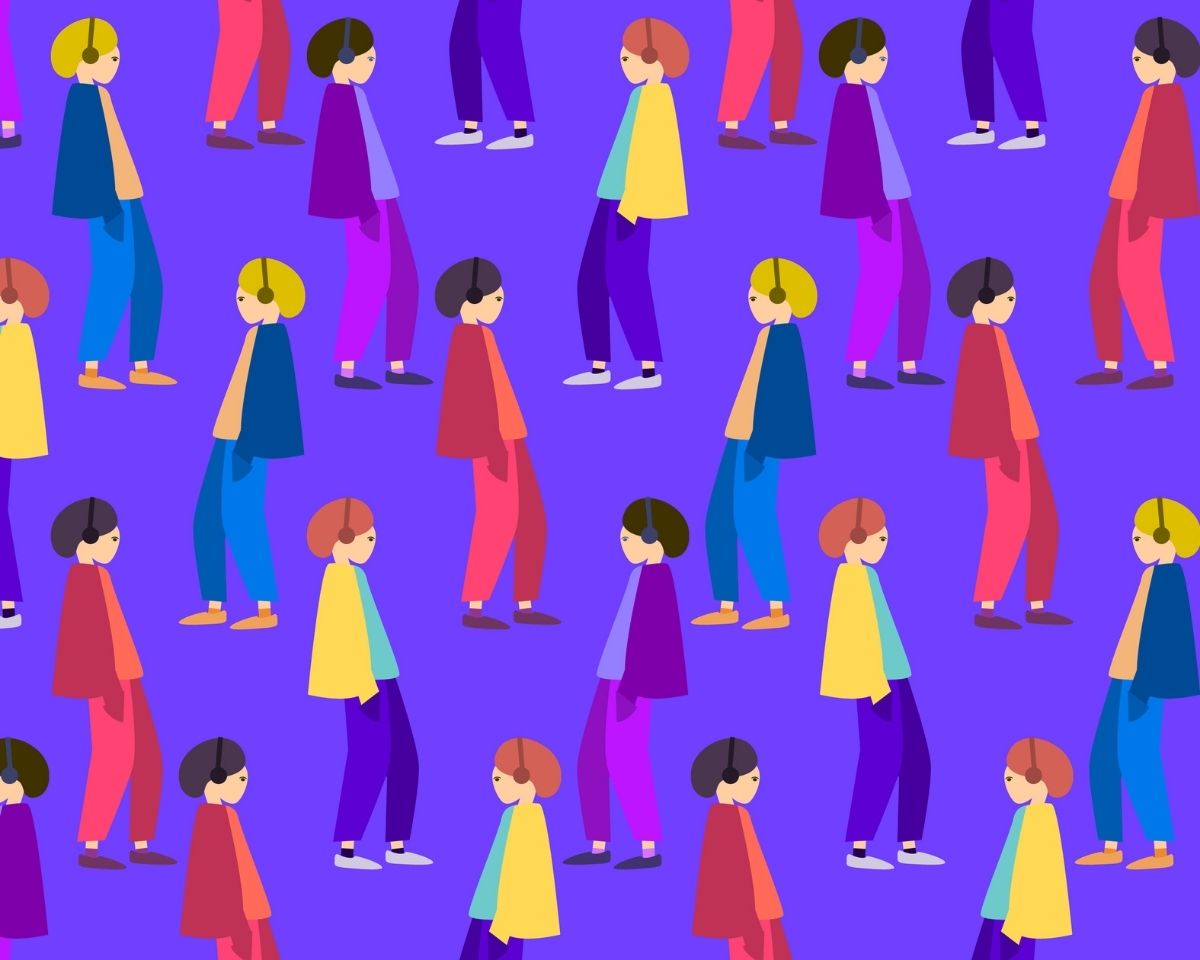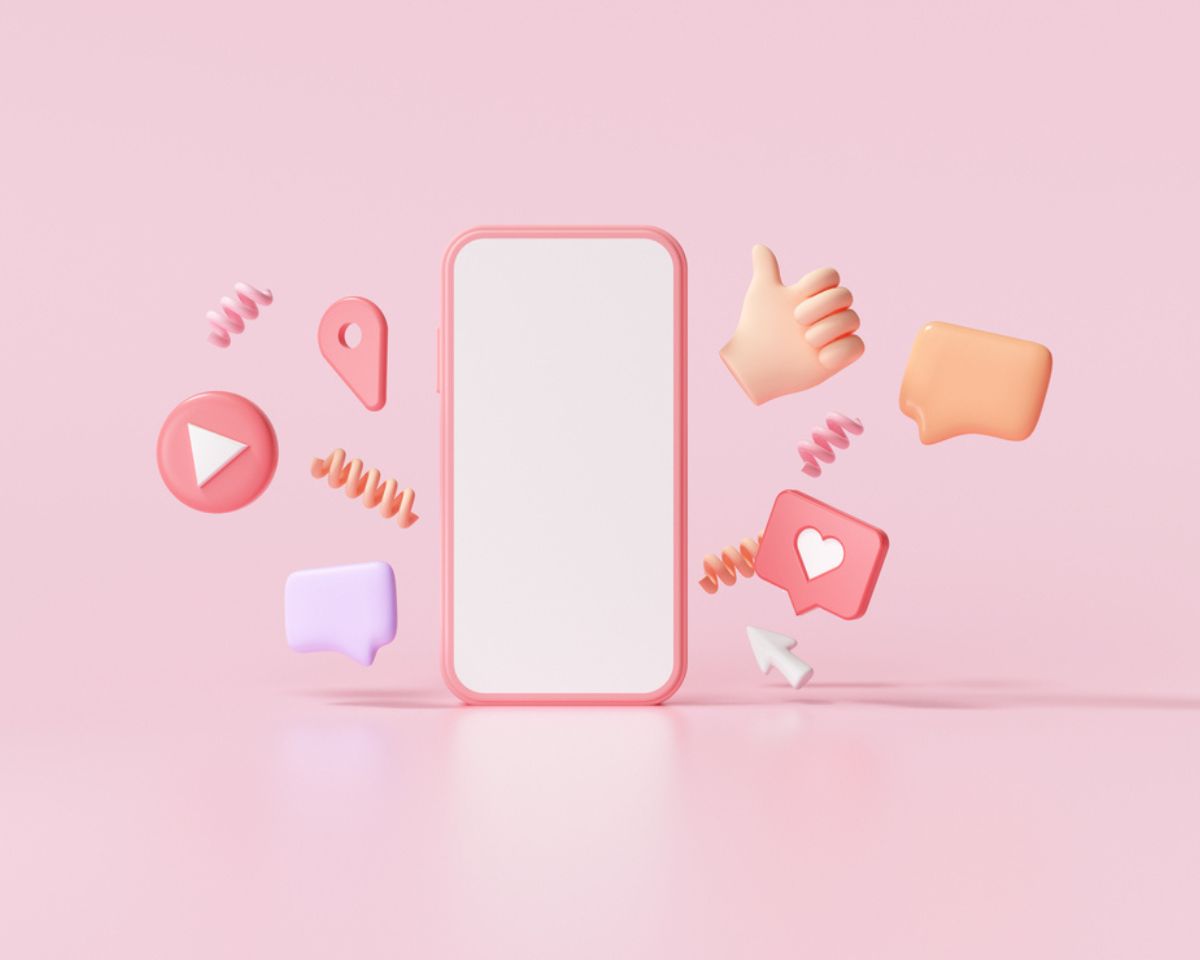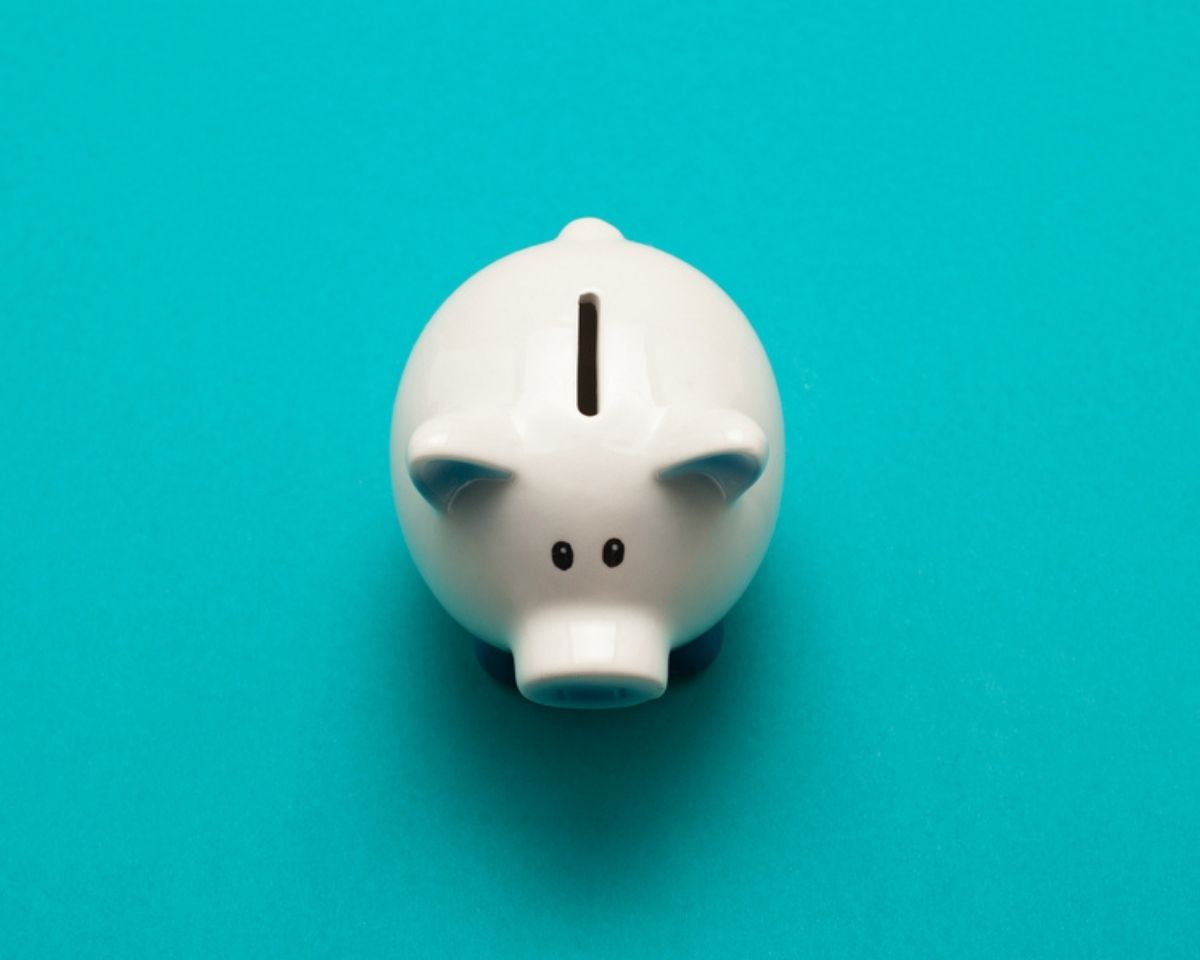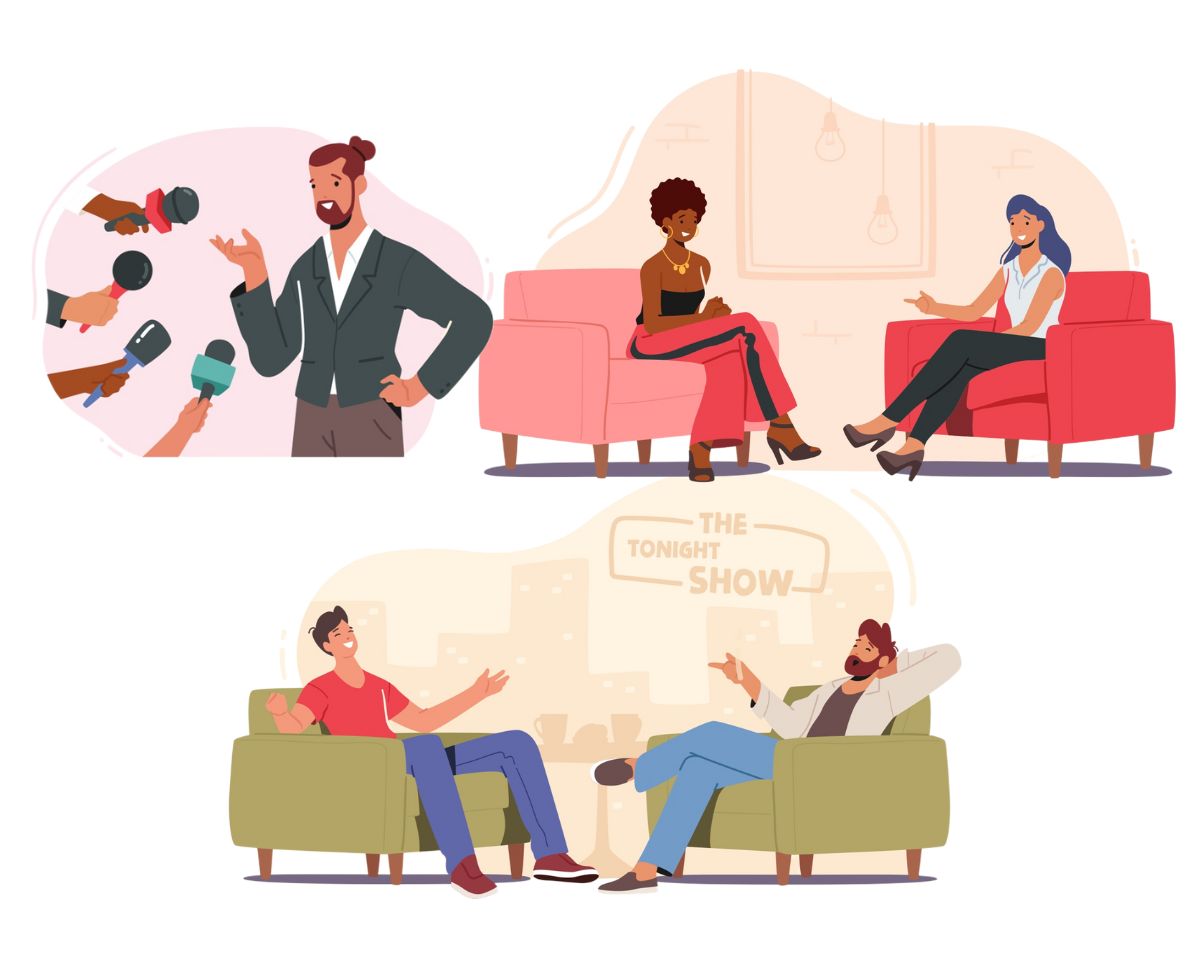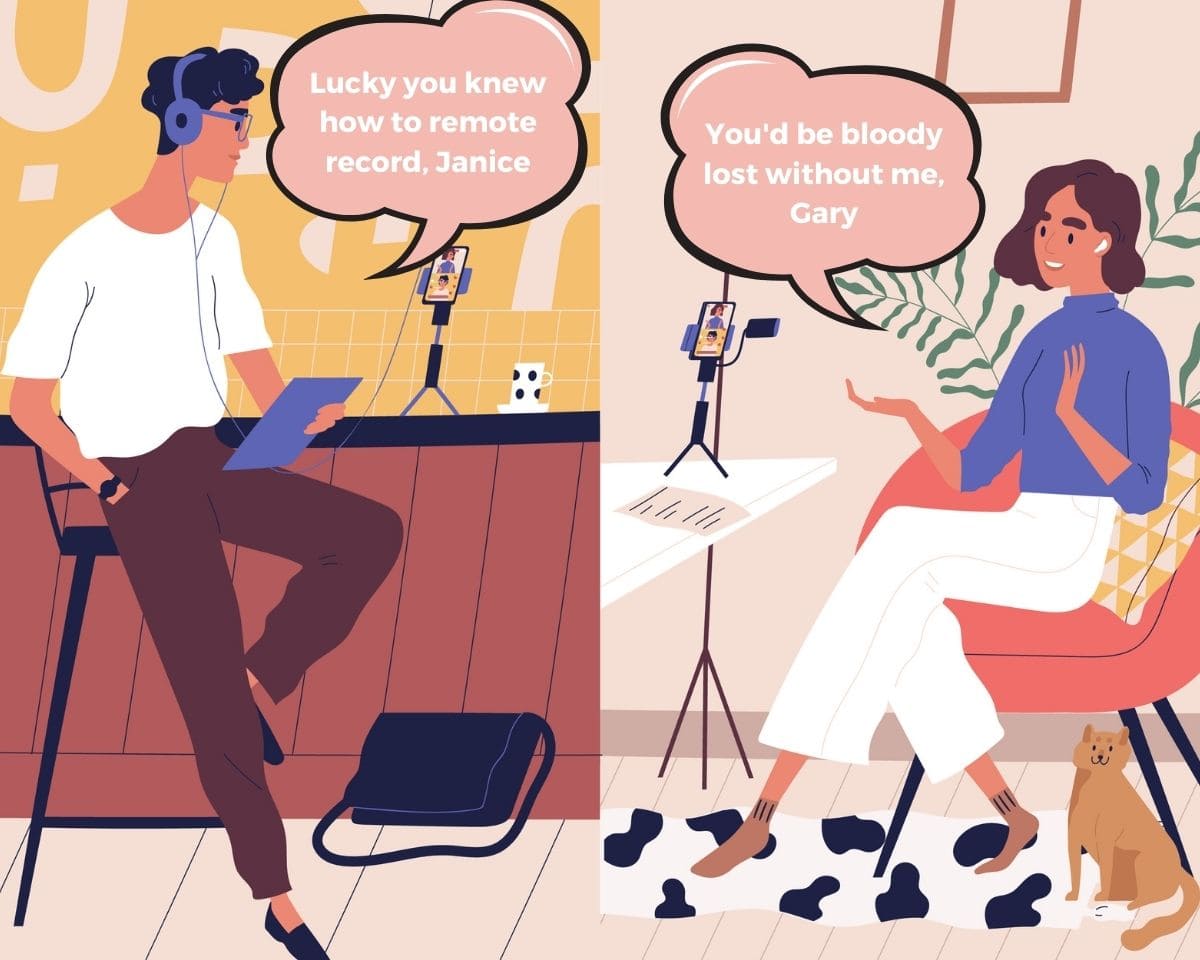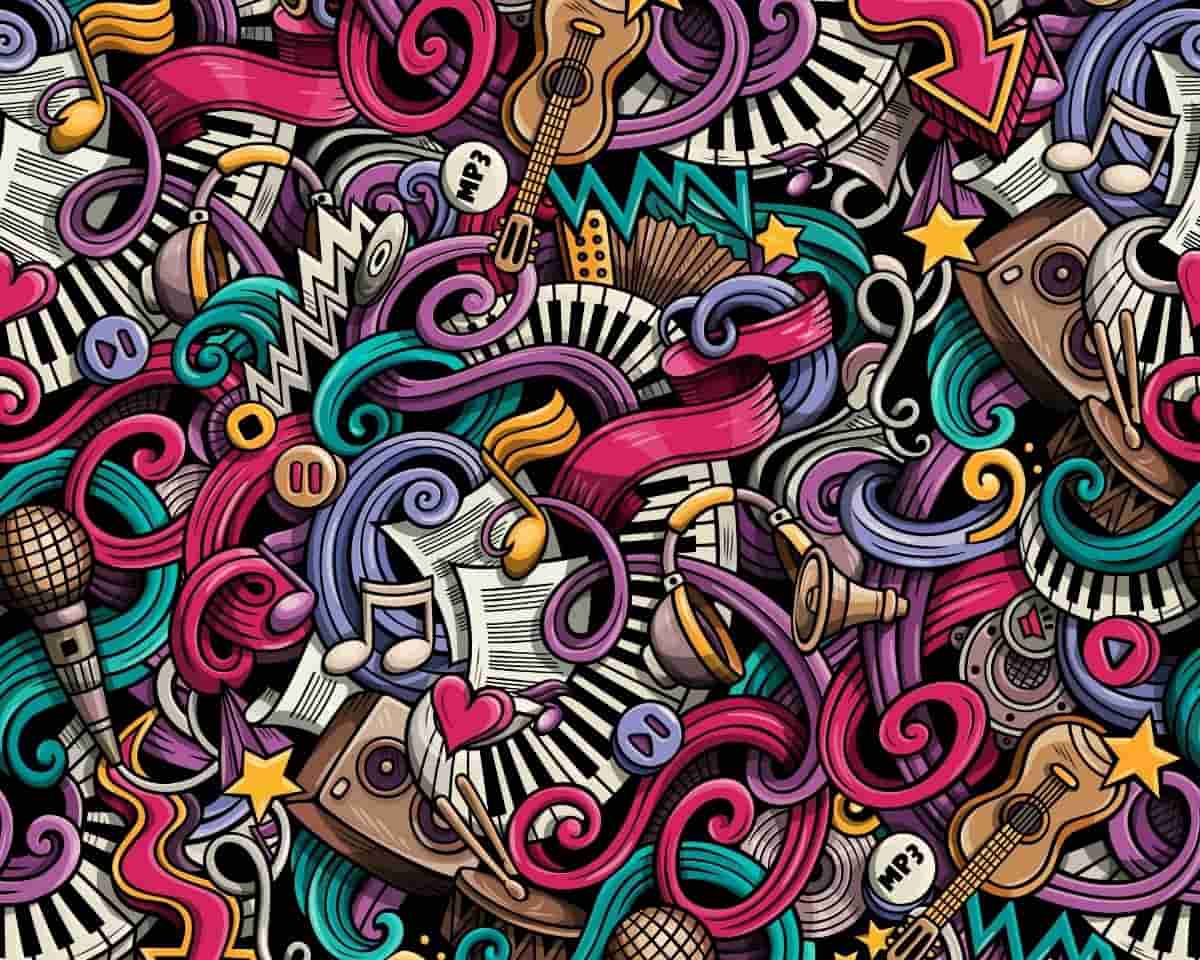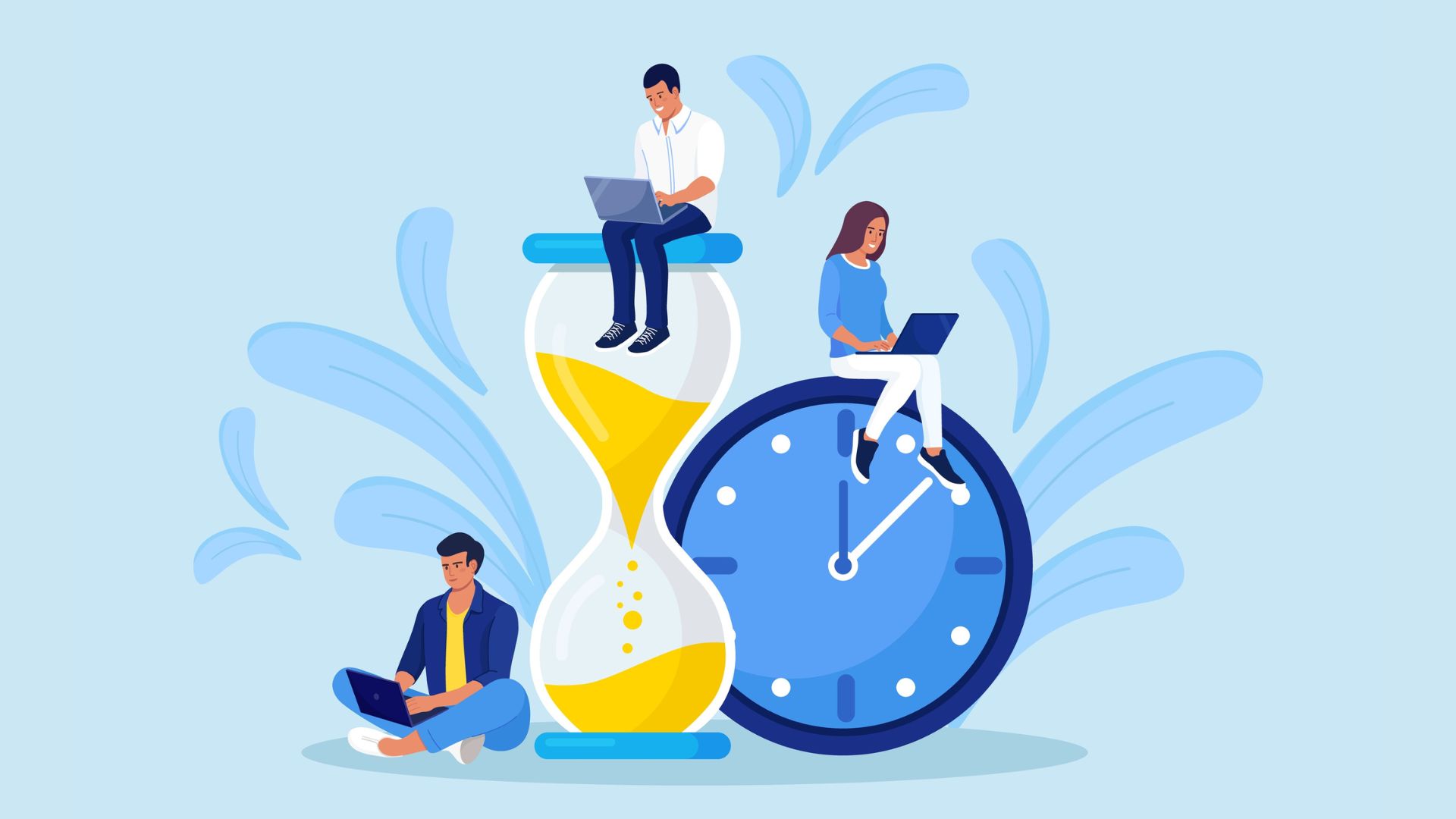Can you benefit from YouTube if you’re not filming your podcast?
Despite being a video platform, YouTube has become one of the biggest platforms for consuming podcast content.
That’s great for people who have the skills and equipment to record and edit video but what about podcasters who don’t?
Well, now there’s a way to upload your podcast to YouTube without having to create any videos.
But isn’t audio on YouTube a bad idea?
It was. Until YouTube decided to encourage it.
Traditionally, if you were going to put your podcast on YouTube the best-practice way to do it was to film your episodes.
Uploading your audio with an image of your logo wasn’t advised as it wasn’t a great user experience on a platform that was all about video.
But for most podcasters who were short on time, resources and video skills, this was the only option.
Now you can upload your podcast to YouTube via your RSS feed and they auto-generate a video for each episode that features your podcast logo.
You might find a lot of people listen to your content this way or you might not get many listens at all but it means your show is available on YouTube so you’re not missing out on potential listeners on a popular platform.
Is this replacing Google Podcasts?
Yes.
Google has decided to shut down Google Podcasts to focus on featuring podcasts on YouTube and YouTube Music.
This is a pity for the many podcast listeners who liked Google Podcasts but the reality is you can’t make money from a podcast app because it’s all about giving away other people’s content for free.
But on YouTube, Google can sell ads on uploaded podcast content so it makes business sense why this is what they’ve decided to focus their efforts on.
This might make you less excited to give this a go but you can’t deny the power of YouTube and the audience the platform has.
So if having your show there means more listeners, that’s a good thing.
They’ve also done a lot of work in the back end so if a listener consumes part of your podcast on YouTube and then goes to find it later on YouTube Music the audio will pick up where they left off.
How does it work?
If you want to submit an existing podcast to YouTube it’s as simple as copying and pasting your RSS feed into the back end of YouTube Studio, just like you would any other podcast app.
This imports your podcast as a series of auto-generated videos with an image of your logo and your audio attached which you then assign as a podcast playlist.
As I mentioned, this is what we were advised not to do for ages but now it’s endorsed and encouraged by YouTube and they’re promoting themselves as a destination to listen to podcasts, this will likely be considered ‘better practice’ (a video of your podcast would still be seen as best-practice).
The great thing is that if you want to create videos for some of your episodes e.g. by filming recordings or creating an animation or slide show that rolls out with your audio, you can replace select audio-only versions of your podcast with these videos.
If you do this you want to make sure the only content you’ve got in your podcast playlist, whether audio or video, is full episodes.
You don’t want to muddy the playlist with other content like shorts or clips from your show.
Someone jumping in to listen to your podcast should experience your content in the same way it would roll out in a podcast app (except that there’s a visual element).
The benefits
It can help with discoverability
YouTube has become a hugely popular platform when it comes to consuming podcast content so having your show on there is a great idea.
Especially since YouTube wants to champion and promote podcast content on their platform.
Exposing your show to a new audience can only ever be a good thing and if the people consuming your content on YouTube wouldn’t have found it your show wasn’t there it means your show is in front of people you wouldn’t have engaged otherwise.
YouTube also says podcasters who’ve seen success on YouTube haven’t seen it at the expense of downloads in podcast apps.
And since most podcast growth is incremental (boring, I know) having your show on YouTube is another avenue to help you chip away at audience growth.
It’s a lot less work
Filming and editing videos for each of your podcast episodes is a huge amount of work.
It also introduces additional complexities into your record like worrying about how you look, guests worrying about how they look and not wanting to be filmed, lighting, your set and editing video.
All of this adds a lot of time to your workflow and isn’t doable for most podcasters.
If you were going to release videos of your full episodes you’d probably have to flip your entire workflow and edit the video to get it down to the best possible content, then export the audio.
But you’d still need to sense-check the exported audio and potentially edit it if anything doesn’t work without the visuals.
That’s a completely different way of working to what most podcasters are used to and it takes a lot more time.
With the RSS upload option, you can have your podcast on YouTube and then use video as a promotional tool by creating shorts or clips that contain compelling content that encourages people to listen to your full episodes.
This means you’re still utilising the power of video without having to film your full show.
The disadvantages
It doesn’t feed into your total download number
Ideally, you’re with a podcast host that is IAB-certified or compliant.
This means they will only register a download in your dashboard if someone has downloaded 60 seconds of audio.
And while, I’d argue, if you’ve watched a minute of a video you’ve probably also listened to a minute of audio those two things are not seen as the same thing by the IAB.
That means your YouTube ‘views’ do not count as downloads in the back end of your podcast host so these analytics, at this stage, remain separate.
This isn’t as much of an issue for independent creators and probably becomes more of a frustration for networks but it’s one of the limitations that exist right now.
You currently can’t commercialise your YouTube content
You can have ads on the YouTube version of your podcast but you’d have to have a lot of listens for that to be lucrative and, at least at this stage, you can’t sell those ads.
If you’ve sold ads on your podcast that are host-read, and baked into the content, they can remain in your show.
You just need to tick a box when uploading your podcast saying it contains ‘paid promotion’ so YouTube can inform your audience.
But if you’re selling ads that are served via monetisation markers those ads will not pull through for people listening on YouTube.
Again, this is more of a problem for networks than individuals but it means YouTube can sell your show on its platform and you can’t.
Your view count might make your show look less popular than it is
View count on YouTube is an important social proof measure but for a lot of podcasters whose audio version does well, they sometimes don’t see a lot of uptake on YouTube.
Even when they’re uploading full videos of their podcast.
That might not matter to you but some creators worry this makes their content seem less popular than it is.
So should you do it?
At this stage, it’s hard to know what the impact of this is going to be long-term.
Or whether podcasting on YouTube will still be around in five years.
There are a lot of things that have come and gone in the podcast space and Google itself has moved on from Google Podcasts to focus on this, so will it work the way they hope? Only time will tell.
But in my mind, if you’re an independent creator who wants to reach more people and all you need to do is upload your RSS feed, it seems like a no-brainer.
You can check out more info about how to upload your podcast to YouTube on their support pages.
Got a burning question you’d like answered? Submit it here.
Want to start your own podcast but need a little help? Download my “How To Start A Podcast” guide or sign up for my online podcasting course, PodSchool.
Hello there. Well, it has been a long time between audio drinks, has it not. But here I am. Because something really interesting has happened in the podcasting world. And I wanted to do an episode about it. And that is that you can now submit your podcast to YouTube via an RSS feed.
So Google recently announced that they will be shutting down Google Podcasts, which is a bit disappointing for a lot of people, because a lot of people really love that app. But unfortunately, it is going to the great podcast graveyard…there are quite a few things in the great podcast graveyard. But now Google wants to focus on YouTube Music and YouTube Main rather than Google podcasts. So they will be shutting that app down.
We don't have an exact date on when that will happen. But you can now upload your podcast into YouTube, you couldn't do it in Australia for a long time, it was able to be done in America. But now you can actually do that. And I went to a conference recently where we were talked through the process and exactly what the plans are from YouTube. And I just wanted to update you a little bit about that, if you're thinking do I need to get my podcast on YouTube.
And if you've been a little bit like me, which is I have been thinking about doing my podcast on YouTube. But the popular opinion and certainly the opinion out of YouTube for a long time was if you're just going to do a static image of your artwork and have the audio there, that's not a really good YouTube experience. And I did not have the time, nor the inclination to make videos around my podcasts, particularly because I'd recorded a lot of audio and the options were to maybe animate something or create something a bit more compelling than just an image. I also wasn't filming my episodes, so I didn't have footage of those episodes to put up there. So I was wondering what the heck do I do with YouTube, it just doesn't seem to work for me. And I know that a lot of podcasters, who didn't have the capability to do video felt the same way.
But now that you can upload the RSS feed. And interestingly, what that does is generate a video that has an image of your logo, and audio, which is exactly what we weren't supposed to do for ages. But now you can upload it that way. And I guess if that is the norm it's hopefully going to be more accepted on YouTube. So you can upload your show without needing to create videos, which is really, really helpful.
And what YouTube are trying to do is create a seamless experience across their main page, and also YouTube music, which will act a bit more like a pod catcher. They are adding features at the moment to make it more like an experience in a pod catcher, it's not going to be a pod catcher, but the interesting thing that I found at the conference was they were saying that if you listen to a podcast or view a podcast on YouTube main and then jump into the YouTube Music app it will basically pick up exactly where you left off. So it will seamlessly go from one to the other, which is really exciting.
So this has happened because not only are pretty much all companies thinking about what their audio strategy is, particularly a platform like YouTube, but also because over the last few years, a huge number of people are consuming podcasts on YouTube. And that's mostly shows that are filmed. And naturally, that is just not a possibility for most podcasters if you want to create a video podcast.
AndI have to put a little caveat in here, I'm not 100% sure about this video podcast term. For me, I feel like a podcast is audio, and then a video podcast…it’s just sort of getting to the point where it's just video. What makes it a video podcast? If somebody's got a microphone in front of them? If you're watching a YouTube video of a podcast being recorded is that a video podcast or is that just a video of a podcast? I'll leave that for you to ponder.
But basically the workflow that you need to do if you are going to upload audio in the backend of your podcast host but you're also going to have the video aspect of your show is completely different to how most podcasters operate. Even the podcasts that I look after in networks, we edit the audio. And of course, we have a video component, but we use those videos as social promotion. So we will cut little snippets and clips. And we'll share those out on social media to point people to the audio. The reason that we do it that way is because we might record 40 minutes in a studio. And we're only putting 25 to 30 minutes of that out on our podcast. Now we're not going to put the full unedited version of the video online because we are editing that show to make sure the best bits are the bits that go out to the audience. And if we wanted to create a video version of that, the easiest way to do that would be to take the video, edit the video, get the video to the point where we like it and then export the audio from that point but then you'd still have to listen to the audio because there are things that would work visually that might not work if you haven't got the vision associated with it. That just increases your workflow immensely. So for a lot of people YouTube wasn't a possibility because of that.
Also not having the skills. Video is an entirely separate skill set to audio, you also have to worry about what you look like what your background looks like, what your lighting is all of those kinds of things that can really complicate things.
The other thing that was an issue was that your views on YouTube did not come into your dashboard for your podcast host, that was an entirely separate thing. So it wasn't like it was adding to your downloads unless you had your little spreadsheet, and you're adding everything together manually. And even then a view does not count as a listen the same way that a listen does in the back end of a podcast host. So that separation was really difficult.
The other thing is you can't monetize it, you would need a lot of views on YouTube to be able to monetize that channel. And if you are selling ads in your podcast, those ads don't pull through to YouTube. So that's an issue for anybody monetizing their show, which is usually more of a problem for networks than it is necessarily for individuals. And obviously, as I mentioned, the idea of putting up an image was not best practice previously. So that was the only option for a lot of people who didn't have the capability to make video.
Now, this ability to upload your RSS feed solves a lot of those problems. Not all of them, but it does mean you can simply upload your podcast to YouTube, it will generate a video of version of your logo, and then the audio is attached and people can listen on the platform. And it will be interesting to see how this changes behaviour for people who are traditionally in YouTube. Whether they go to those videos, and it doesn't matter if they don't have anything visually except for a logo and if that increases your audience.
The thing to note though, is it's about incremental audience growth. So YouTube is saying that people who do really well on YouTube, if they start putting their content up on YouTube, it doesn't impact their numbers for people listening on other platforms. So it's not about taking people away from your other platforms. It's about distributing your content in a new place where people who might love YouTube and aren't gonna go and listen to your podcast on Spotify might listen to it in YouTube. So it's really about growing your audience.
Audio is hard when it comes to discoverability. Finding new shows, we're still in that world where I mean, the charts and those kinds of things are really good, but for most people, they find out about podcasts through recommendation and word of mouth. And that is slow in terms of growth. So what YouTube really want to do is to increase the amount of discoverability for podcasts on their platform. So in things like the homepage and watch next, they want to surface more podcast content to get people to watch more podcasts. Now, I would imagine that the podcast content they were surfacing would mostly be the stuff that is filmed because obviously looking at an image of your podcast logo is not as exciting is looking at a bunch of people sitting around a desk talking about something on their podcast. But the fact that they want to use the platform to surface more content means this could be really great for you in terms of increasing your audience.
The other interesting thing is that if you upload your RSS feed, and you have a podcast within YouTube, you can also create inside creative studio, a playlist of videos. And the thing about podcasts within YouTube is that they play out like a playlist. So you can create videos maybe of some of your episodes, and link those things together so that some of the episodes could be audio with an image of your logo and some of the episodes could be video.
YouTube suggests that you don't mix any other content into these playlists. So it should play out exactly like your audio podcasts would play out in terms of episodes rolling out one by one, it shouldn't be an episode and then a couple of clips from that episode and then a video version of that episode, if you're gonna mix the two, then you would set the audio version to private if you had a video version of that episode, and space those in between so that it plays out exactly like the episodes would roll out in a pod catcher. And it can feel like a podcast experience as opposed to oh, hang on a second, I just listened to this episode and now I'm getting a video of a clip from this episode? Like why is this happening? So you want to make sure that it is really a seamless experience for your audience.
A few of the limitations…naturally, the analytics are still separate. So it won't feed into that overall downloads number. And the reason for that is at this stage, the IAB do not see a view as a download. So the way that downloads count within podcast apps, if they are IAB compliant, is you have to download 60 seconds of audio for it to register as a download in the back end. Now, I would argue that if you've watched 60 seconds of video, you've probably listened to 60 seconds of audio, but at the moment, that is not seen as the same thing. So they do not aggregate those numbers into the one download number. I think probably it will move to that eventually. And I think that's something is an industry certainly working in a network I think that's something that we could probably talk to the IAB about adjusting because it would be best for us to have all of those numbers in one rather than having those numbers separated out. But that is a limitation at this stage.
Also, as I mentioned, ads don't pull through. So if you sell ads on your content, they're not going to pull through to YouTube. At the moment, you can't sell ads on your YouTube channel. But that's probably more of a problem for a network more than an individual. In fact, that splitting out of downloads and views as separate things is probably not going to mesh into one until you can commercialise the downloads that you have on YouTube or the views that you have on YouTube. Because especially from a network perspective, that number of downloads is what you take to sell when you're commercialising your network. And if you've got a whole bunch of views in there that you can't actually commercialise, well, then you’re going out with a number that has a bunch of listens or views in it that aren't able to be accessed by an advertiser. So it's all very complicated at the moment, I'm not sure how it's all going to roll out. But here's me just live spitballing thoughts as they pop into my head.
The other thing to note is, you also might not see a huge amount of uptake on your YouTube views. And that might not matter very much. I think some shows who have a huge audience, even when they're filming their episodes often see that the episodes that are on YouTube, do not do nearly as well as the episodes that are audio only. And then they have this weird thing where they've got people in the comments going, “Why has this got no views?” And there's a thought of “Does this make the content look worse because we're getting heaps of listens on our podcast app?” So there might not be a huge amount of audience there. And it might be a bit of more of a long term play. I don't think it's the kind of thing where you're going to double your audience in five seconds. And you might find that your channel gets a really small amount of numbers. And YouTube has had a bit of feedback around the view count on podcast episodes, and they've heard the feedback. But obviously, view count is one of those social proof metrics in the platform that they find really helpful, and that they want to keep. But from a podcast perspective, there are people that are saying, “Hey, my podcast actually does really well And then it looks like it does really badly on YouTube, so is there any way that we could adjust that view count?” That's something that's being debated at the moment. But you might not get a huge amount of people listening to your podcast online, particularly if you've only got that image of your logo, but I think it's worth the experiment, just to see what you've got. You can always take it down but having that ticking away is not going to harm you in any way, if you're an independent creator.
Some of the benefits, obviously, is being able to upload your RSS and be on YouTube, if you don't have capacity or the skills to make video, that makes things so much easier. Is it going to be successful? Who knows but it's worth giving it a shot. Discoverability, as I mentioned, they're really keen to surface new content but again, I think that content will probably be the video first content, but who knows. You might see real success, even if you've got an audio only version of your show uploaded to YouTube.
YouTube, we're also working on some more generative AI tools behind the scenes that could help make the process easier for podcasters so that's exciting.
You can also put chapter markers in your YouTube content. So you might have seen this in videos that you're watching where if you scroll through, it shows you what topic has been covered at what spot in the video. So that can be good if you're talking about a bunch of different things, then your audience can gonna go “Oh, I'm interested in that” and just listen to that.
And obviously, you can also use all of the other video capabilities within YouTube to try and promote your podcast, so clips and shorts to try and create short little pieces of really engaging content. And you don't just want that to be you going “Hey, listen to my podcast!” That needs to be a standalone piece of valuable content. But if people really like watching that, then they might check out your audio on your podcast. So those can be really good tools as well for you to promote your podcast on a platform where you're not having to say, “Hey, now that you've watched this video, and you've loved it, maybe click out to a pod catcher and find my show in that podcast app and then listen to it there.” You can point people to it in YouTube. So that's a really good way to get people to listen without having to get them to move to another app. Because we all know, if you're asking people to do anything that involves leaving the platform that they are on, then the chances are they're not going to do it.
So I think at this stage, we're a bit unsure about what the impact of this is going to be. Allso unsure if in five years time, it'll still be around because often platforms step into audio and podcasting, and then after a while they're like “Hang on a minute. This is not as lucrative as we thought it was!” or th”Thisis hasn't worked the way that we thought it would!”
Obviously Google Podcasts is an example of that but this is the same company so it makes sense that they would concentrate their efforts on one platform. ButI think it's really exciting if you are an independent creator. So give it a crack and see what it does. You can see if it increases your discoverability. Know that it's not going to add into your download number in the back into your podcast host but that doesn't mean that those views don't count and you can't add that into your total number, even if it's not technically seen as a download at this stage.
So I really think if you're an independent podcaster, you should give it a crack. As a network it’s a much more complicated decision, I think because obviously monetization and commercialising content is the main driver of all networks. And if that content can't be commercialised, then it's a tougher question about whether it is worth the effort. But if you are doing your podcast in your lounge room not making money out of it, just wanting more people discover it, I think it's a no brainer.
So definitely, definitely check it out. I will put a link in the show notes to where you can find a bit more information in YouTube's support pages.
I'm also going to drop a link to a Google form…and I mean, that's so ‘on brand’ for this episode, right? Because I want to bring the show back next year, but I want it to focus on your questions. So I obviously have so many episodes in this show and also on my website. So I might have answered your question already, so make sure you go through and check that. But if you have got a question, and I haven't answered it, then just click on the link in the show notes and submit your question. And I'll be collating these and hopefully bringing back the show early in 2024.
So thanks so much for joining me for this episode. I hope you give YouTube a try with your podcast. I hope you see results. If you do let me know. I'm really interested to see where this goes and what the impact is for the industry and for especially independent podcast creators because I think that's probably where the most value at this stage is going to be. So thanks so much for joining me and I will catch you in the next episode.
